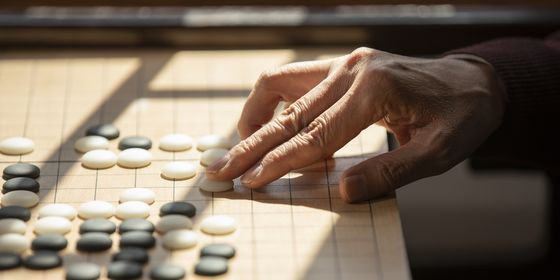China’s growing interest with working out at the gym
Physical exercise in China is often associated with kung fu, tai chi, and old-timers practicing synchronized dancing in public spaces. However, China is also witnessing the rise of a muscle-gains—and weight loss—culture. Adia, a graduate student at one of Beijing’s universities, says that seeing celebrities’ exercise photos on social media influences her desire to look like them: “Their body shape is perfect, and when you see them, you think ‘I want this, and I want this on myself!’”
More and more Chinese are willing to spend money on fitness clubs and gyms. According to an industry report by global market research firm IBISWorld titled “Gym, Health, and Fitness Clubs in China,” the Chinese fitness industry was projected to produce 6 billion USD and employ 217,036 people in 2016. In 2015, Xinhua reported that the total number of people working out in gyms across 70 cities in China had been increasing by four to five million per year since 2011.
According to “Gym, Health, and Fitness Clubs in China,” the new market of gym-goers consists mostly of people aged 15 to 49, with 70 percent aged 19 to 40 and 23 percent aged 41 to 50. The individuals tend to be students, office workers, and middle-class workers in well-paying positions. As for the enterprises, China had an estimated 2,496 independent firms that provide fitness services in 2016. Of these businesses, 68.1 percent are in eastern and northern China, where the country’s economic centers are located.
Based on the above data, IBISWorld speculates that the reason for the rise of gyms could be in part due to China’s transformation into an economy less dependent on physical labor. As more and more of the population adopts a sedentary lifestyle, certain health issues appear, which in turn has resulted in greater demand in gyms and fitness clubs. The increased demand for gyms and fitness clubs is also associated with China’s growing household disposable income.
There is also the factor of government policy. In 1995, the Chinese government adopted the Physical Health Law of the People’s Republic of China with the aim of encouraging the entire population to exercise, with a special focus on children and youth, in hopes of forming healthy habits from a young age. Regardless of the reason of its existence, the fitness trend is making a mark on urban Chinese people’s lives.
The gym craze is not only creating a real-world economy, but a digital one too. Hundreds of thousands of people in China are now downloading mobile applications to learn how to get fit, how to diet, and to keep themselves on track to their fitness goals. It is, however, unclear how many users simply download but do not use the apps consistently or even at all.
Chenyu, a Beijing university professor and researcher, and Adia both tell TWOC that they have fitness apps on their smartphones, but neither uses the app much during their exercise routines. They have found the apps to be not as helpful as they thought they might be.
Another digital means to improve one’s exercising is by following fitness celebrities on social media. There are a number popular of Weibo, WeChat, and other social media accounts that document individuals’ efforts to stay fit; the more famous of these social media fitness personalities include Wang Yin, Yuan Shanshan, and Korean mom-turned-fitness-celebrity, Jung Da-yeon. Adia also follows Western celebrities on Instagram, such as Gigi Hadid, a Victoria’s Secret model, and Kendall Jenner, model and member of the Kardashian clan.
Non-famous individuals also post photos of themselves at the gym or while working out, both to keep themselves motivated and to show off achievement, sincerely or in the form of humble-brag. The satisfaction of either achieving work-out goals or being validated for their fitness behavior is strong enough to keep people returning to the gym. Chenyu writes in an email to TWOC that he was happy to see his friends’ reactions to his weight loss after he started to go to the gym and dieting, although he does admit that having a personal trainer is probably the strongest motivating factor. Adia posts pictures of her workouts on her social media to get “thumbs-up” from her social network, for the simple reason that it feels good to get positive feedback from others.
Adia herself is critical of China’s newfound love for fitness clubs: “[Chinese people] think that it’s more advanced if you go to the gym, because it’s ‘Western,’ and maybe it’s [a sign of] ‘lifestyle’: We think that if we go to the gym, we have a better lifestyle than the people who don’t.”
It is primarily the changing attitudes among urban, middle-class Chinese people that are driving the new fitness economy. Chenyu says, “Jogging has become a new religion for these people.” “Run for Fun,” a long-distance running event organized by Liang Yu, founder of real-estate development company Vanke, has spread to 60 cities in China since it was founded in 2013 and can boast having over 100,000 participants per run. Adia and Chenyu say that to some extent, middle-class people’s views of a healthy body have changed. Chenyu believes that the people in the Chinese middle class “generally believe healthy does not necessarily mean being slim, and skinny models are not as attractive as they used to be. BMI has become the standard we care about the most.”
With regard to Chinese women—who, like women in most societies, are frequently told how they ought to look—the fitness trend is also changing what is imagined as normal. Chinese women have in the past been described as uninterested in fitness, instead often deciding to simply starve themselves in order to lose weight. This is not entirely accurate today, with the fitness trend encouraging women to do cardio or strength exercises. Adia, whose usual workout routine involves running, says that many women today want to challenge themselves, and take up fitness activities that previously would have been considered too tough for them.
At the same time, Adia believes that while there may be some people in China who think that strong, tough, fit women are beautiful, she doesn’t think it’s “the mainstream idea in China to consider women with muscle to be more beautiful than skinny women….In the whole of China, the standard of beauty hasn’t changed much,” she says. Chenyu also believes that Chinese beauty standards have not changed radically in the last few years, in spite of the rising enthusiasm for fitness. “I don’t think that Chinese people overall really changed their views on [what constitutes a good body],” he says. Both Adia and Chenyu emphasize that the fitness trend mostly exists among the middle-class Chinese, and Adia notes that non-traditional views on beauty is more likely to be found in “highly-educated women’s communities.”
It is hard to criticize people’s reasons for working out: whether it’s to lose weight like Chenyu, or to shape their body into one they are happier with, like Adia. Chenyu says his motivation for losing weight is that “being obese may cause some trouble in my interpersonal relationships, while being normal [weight] makes me more confident.” Undoubtedly, everywhere in the world, people are pressured to conform to standard ideas of what a good body is, but it is difficult to argue with the personal satisfaction they gain from setting fitness goals. Meanwhile, Adia has her reservations about the gym trend, though she is part of it herself, arguing that just getting on the bandwagon without reflecting on why you want to participate is “a little dangerous.” We may have to wait for time to pass before we can make any judgment about the bigger societal effects of this trend—until then, Chinese are on a quest for gains.
Cover image from binghaola.com














